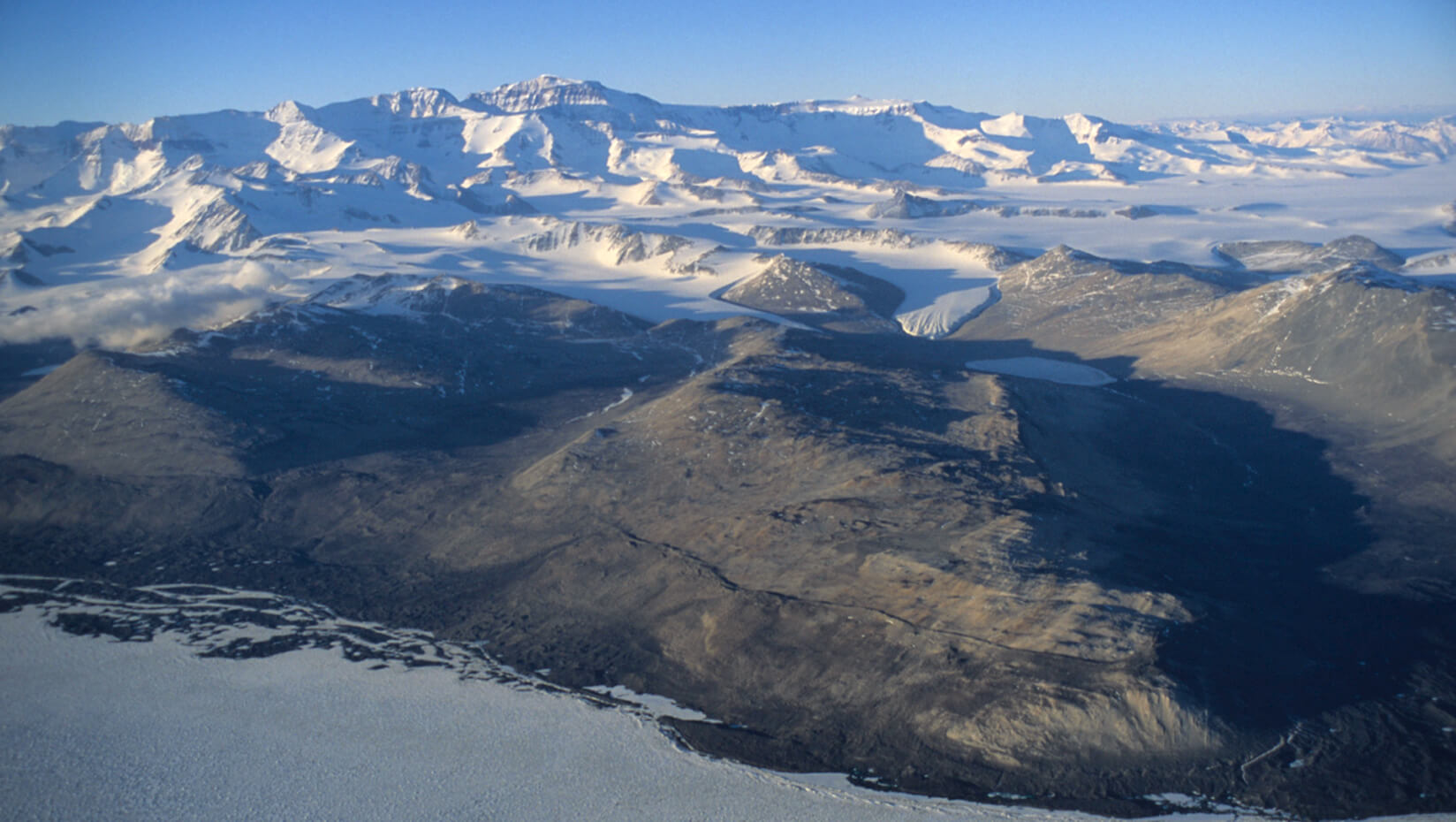
Learning from the past — behavior of the Antarctic Ice Sheet
Researchers at the University of Maine wanted to know how the Antarctic ice sheet reacts to climate change.
To find out, they dove into the past to learn how the ice sheet behaved during the last glaciation, when the glacier achieved its greatest extent and what factors contributed to its ultimate retreat.
In order to understand the behavior of the ice sheet during the last glaciation, the researchers used 180 radiocarbon dates of algae — found buried in glacial sediments in the Transantarctic Mountains — to reconstruct the chronology of moraine formation on the headlands adjacent to western McMurdo Sound in Antarctica.
Because radiocarbon decays at a known rate, the researchers used this to calculate the age of the algae. This information allowed the researchers to piece together a record of maximum ice thickness during the last glaciation in the Ross drainage system, fed by the East and West Antarctic ice sheets.
The team found that the ice sheet in the Ross Sea achieved its greatest thickness and extent not during the global glacial maximum but during the termination of the ice age, between 12,800 and 18,700 years ago.
Meaning, while glaciers around the world were losing mass quickly and disappearing, the Antarctic ice sheet was growing.
“This is the first time that the maximum extent of ice during the last ice age has been well-dated in the Antarctic. But it’s also important because it shows that the maximum occurred during the termination of the ice age,” Brenda Hall, professor of Glacial and Quaternary Studies, said.
Due to the cold environment of the Antarctic, a glacier loses mass in nearly equal parts from shedding of icebergs and from melting by seawater at grounding lines and beneath ice shelves.
Such melting, from warm waters on the continental shelf, is the cause of present-day ice recession in the Amundsen Sea sector, which has prompted reports that West Antarctic Ice Sheet collapse may be underway and could contribute significantly to sea-level as the climate continues to warm.
After comparing their data with various climate records, the researchers inferred that the reason why the Antarctic ice sheet grew during the last termination was because it was relatively insensitive to rising air temperature. Instead, says Hall, the ice sheet responded to precipitation, which increased several-fold during the last deglaciation period.
The researchers further concluded that the reason for eventual deglaciation in the Antarctic was from a marine mechanism and that a pronounced spike in global sea level during the last deglaciation at about 14,600 years ago — attributed by others to be the result of an unstable Antarctic ice sheet — was unlikely to have come from the Antarctic.
“This research is important because it allows us to understand better the mechanisms controlling the ice sheet and thus to improve our understanding of future sea levels,” says Hall.
Their research culminated with a paper, “Accumulation and marine forcing of ice dynamics in the western Ross Sea during the last deglaciation,” which appeared in Nature Geoscience in July 2015.
Other authors included professor George Denton, as well as former graduate students Stephanie Heath, Margaret Jackson and Tobias Koffman at the School of Earth and Climate Sciences and the Climate Change Institute at UMaine.
Contact: Amanda Clark, 207.581.3721
